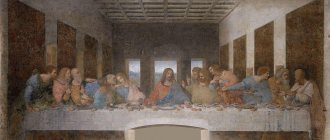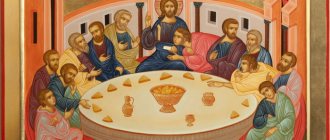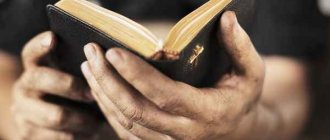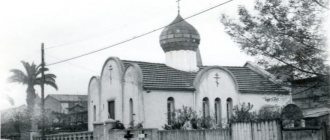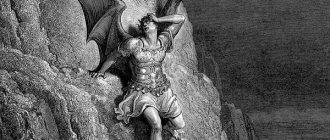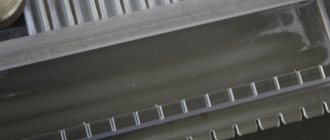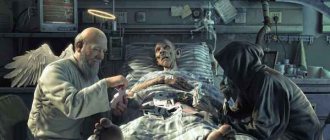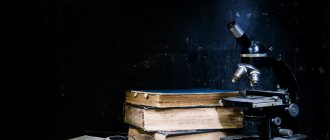Interesting Facts
There are some facts associated with it, the authenticity of which has not been proven.
The long creation was due to the fact that the artist could not find prototypes for the main characters – Judas and Christ. He wrote Jesus from a young man who sang in the church choir. But Leonardo could not find a person from whom Judas could be painted. Only at the end of the third year of working on the fresco did he see a drunkard lying in a ditch. Da Vinci ordered him to be brought to him. Having sobered up, he told the genius of the brush that he used to serve as a choirboy, served the Lord, but now he had sunk to the very bottom. The most beautiful memory of the unfortunate man was the time when the Savior was painted from him.
The amazed artist began to paint with delight. The image of Judas was found.
Art historians are debating who is to the right of the Savior. Many researchers claim that this is not a man, but Mary Magdalene. Other scholars say that all the characters are written in the order in which the zodiac signs are placed. According to this version, it turns out that Christ was born under the sign of Capricorn.
During the war of aggression against the Nazis, everything was destroyed by explosions. Only the wall with the fresco survived. At the end of the 17th century, the refectory on the wall was converted into a stable.
Art experts note that Leonardo thought of all the details. So, near Judas there is a salt shaker with spilled salt, which has always been considered a harbinger of trouble, and an empty plate.
Tickets, opening hours
Visitors to the church wishing to see the Last Supper can only enter the church in groups of up to 25 people. Before entering, everyone must undergo a procedure for removing contaminants from clothing using special devices.
But, despite this, the queue of people who want to see the fresco with their own eyes never dries out. During high season from April to November, tickets must be booked at least 4 months in advance.
Moreover, the reservation must be paid immediately. That is, you cannot pay later for what you ordered in advance. In winter, when the flow of tourists subsides slightly, you can book tickets 1-2 months before your visit.
The most profitable way to buy tickets for the Supper (CENACOLO VINCIANO) is on the official website of the Italian Ministry of Culture www.vivaticket.it, which is available in Italian and English, but in fact there are never any tickets there. As of 2021, an adult ticket costs 12 euros + 3.5 euros fee.
Story
Leonardo created this work over several years: from 1495 to 1498. The carefully drawn details of the interior, the features of the images of saints and Christ required long, painstaking work. Reliable facts are known about how the picture was painted and who inspired the idea.
Customer of the famous creation
The painting was done at the request of the Duke, who lived in Milan. His name is Ludovico Sforzo. The Duke was not distinguished by righteousness, and often took part in riotous events. Sforzo's wife Beatrice, on the contrary, was a pious and meek woman. The sudden death of his wife put an end to Ludovico's unrighteous acts. He turned to the master with a request to create a painting. The late Beatrice asked him about this. The Duke decided to at least posthumously fulfill her will.
How it was created
The painting is quite large, dimensions – 880x460 centimeters. He painted with a special paint – based on eggs. This gave the work an amazing shine, the colors were rich, the people looked as if they were alive. This also contributed to the damage to the painting. After just 20 years, the canvas began to crack.
Before writing it, the master invented a special composition with which he covered the wall.
Damage and restoration
The use of egg-based paints and the location of the church in a damp place contributed to severe damage to the fresco. The paints began to peel and crumble. There is evidence that in the mid-16th century the painting on the wall was practically invisible.
Restorations took place in the 17th and 18th centuries. The artists, apparently, did not know their business well. Errors were made during the work that distorted the people depicted.
In the 20th century, Mauro Pellicioli again decided to take up restoration. What is now preserved on the wall of the refectory in the church is the work of this particular restorer. He almost managed to restore the true colors and contours.
Damage and restoration
During its more than half a millennium existence, the fresco was damaged several times. And by the Dominican monks themselves, who cut off the lower part of the image along with the feet of Jesus and the closest apostles. And Napoleon's troops, who turned the church into a stable and threw stones at the heads of the apostles. And Allied bombs that exploded on the roof during World War II. After the damage was caused, well-meaning restorers tried to repair the damage, but the results were not very good.
Already at the end of the 20th century, a lengthy restoration removed all previous unsuccessful restoration attempts and corrected the damage caused to the fresco. But despite this, today’s “Last Supper” is just a shadow of the masterpiece created by the great painter.
The photo below shows a restored copy:
On the table of the apostles
No less interesting is the question of what surrounds Christ and the apostles on this fateful evening. In earlier depictions of the last meal of the Son of God, the food was quite simple and modest - just as Jesus himself was. However, da Vinci depicts a whole feast - and he does this for a reason. For example, fish is on this table for a reason. After all, fish is one of the important symbols of Christianity and Christ himself. In addition, some of the apostles were fishermen. There is also a theory that the name of the fish is important. And it’s either herring or eel. And all because the Italian name for eel is consonant with the word “instruction,” and herring in this language is called a word similar to the word “atheist.” Completely opposite meanings! There is a version that the dishes depicted on the table, which were quite luxurious for that time (for example, not everyone could afford an orange in those days!) was a veiled mockery of the church. Da Vinci believed in God, but church orders did not always suit him - so he painted a real feast on the walls of the temple, whose monks could only eat very modestly. Moreover, the table and dishes present in the picture are very reminiscent of those that were actually in the monastery in those days. There is also an upside-down salt shaker on the table - but spilling salt has been considered a bad omen since ancient times!
"The Da Vinci Code" (scandalous novel by Dan Brown)
Particularly heated debates erupted in the world after the film adaptation of Dan Brown’s scandalous novel “ The Da Vinci Code ,” where, among other things, he claims that Mary Magdalene was not only the beloved disciple of Jesus, but also his wife . The book has been translated into 44 languages and published in a total circulation of more than 81 million copies. The Da Vinci Code tops the New York Times bestseller list and is considered by many to be the best book of the decade. The novel, written in the genre of an intellectual detective thriller, was able to awaken widespread interest in the legend of the Holy Grail and the place of Mary Magdalene in the history of Christianity.
However, the Christian world reacted very sharply to the release of the book and film; Dan Brown's version was destroyed with a thousand critical responses and comments. One of the zealous ministers of religion put it most eloquently, even calling for a boycott of the film: “piercingly anti-Christian, full of slander, crimes and historical and theological errors regarding Jesus, the Gospel and a hostile church.” However, putting aside religious narrow-mindedness, one thing can be said for sure: none of the critics was alive then, and cannot know the real history. It may be known to the one whose name is inscribed in the title of our site, and we will return to his words.
Ideal proportions
Of course, the work of Leonardo da Vinci was subject to the laws of the golden ratio described by him, and therefore turned out to be very proportional. Moreover, the author ensured that the perspective and realistic depth of the fresco were maintained using an unusual technique: he drove a nail into the wall with a thread attached to it, and made marks on it, indicating different depths in the image. However, it is also interesting that the master calculated the arrangement of figures and objects in the composition according to the rules of musical harmony. After all, da Vinci was deeply passionate about music and saw in it the highest divine harmony - and this resonated in his work. The fresco became music dressed in visual form.
How to buy last minute tickets
How to see the famous fresco by Leonardo?
Having scoured the entire Internet and analyzed dozens of intermediary sites, I can recommend only one reliable site for buying tickets online “at the last moment” - this is www.getyourguide.ru
We go to the Milan section and select tickets costing from 44 euros with an English-language excursion - such tickets are on sale in about a week or two.
If you need to see the Last Supper urgently, then choose the option for 68 euros with a tour of Milan.
For example, on the evening of August 18, I managed to book tickets for August 21, while on the official website the next free window was not until December. The cost of 2 tickets with a group tour of Milan was 136 euros.
Working hours: from 8-15 to 19-00 with a break from 12-00 to 15-00. On pre-holiday and holiday days, the church is open from 11-30 to 18-30. Weekends: January 1, May 1, December 25.
